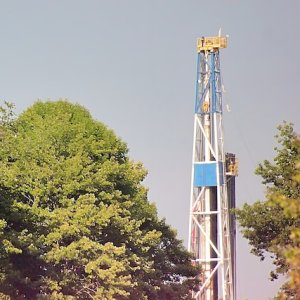
Missing Puzzle Pieces Prevent Mexico’s Storage Take-Off
 By Cas Biekmann | Journalist and Industry Analyst -
Tue, 05/25/2021 - 10:27
By Cas Biekmann | Journalist and Industry Analyst -
Tue, 05/25/2021 - 10:27
Storage is perhaps one of the most common terms floating around in the international energy environment. Governments, companies and experts see it as major building block for a future decarbonized and energy-efficient society. As renewable energy begins to grab a larger share of the global energy mix, the great need for diversification and flexibility makes storage developments somewhat less surprising. However, in the Mexican context, both renewables and storage are lagging compared to other areas. How is storage developing and what does Mexico stand to gain from it?
Flexible Power: Key to Unlock the Future
With pretty much all major economies in the world committing to ambitious climate goals, renewable energy assets are no longer considered “nice-to-have,” but a dire necessity to help stave off potentially catastrophic climate change in the ever-closer future. Wind and solar are key renewable resources in this regard. The economics are already there: sources like NREL state prices for solar and wind energy are dropping drastically, beating fossil fuel-based energy on more than their carbon footprint.
But solar and wind do suffer from one issue: intermittency. The sun goes down and is obscured by clouds, while wind does not blow continuously, which means renewable energy can simply not be produced around the clock. It is also difficult to ramp up or bring down output based on variations in energy demand, something natural gas and coal-based fossil fuel plants can in fact do. Hydroelectricity does have this potential but can hardly be called flexible due to the large amount of space and water resources a hydropower facility takes up, even though it can change its power output sufficiently and function as storage to boot. “(Hydropower) is also affected by climate change and the impacts of weather phenomena, making it less predictable and more difficult to control. Therefore, thermal power generation must come into the picture,” said Raúl Carral, Wärtsilä’s Business Development Executive for Mexico, Central America and the Caribbean, in an MBN interview.
Keeping coal in the mix or betting on natural gas-based power generation is not the answer for Carral, even though the latter is already an integral part of Mexcio’s energy strategy because of the country’s ability to import very cheap dry natural gas from the US. Carral marks coal, combined-cycle and even nuclear power as inflexible. This means that their output takes over 7 minutes or even entire days to go from 0 to 100 in terms of output. Therefore, they are not ideally suited to complement renewable energy in the grid.
Instead, Carral suggests to focus new investments on future-proof technology, which should ideally be flexible and go from 0 to 100 within a few minutes. Despite the current policy direction to move away from private, and thus renewable, developments in the country to favor the country’s public utility, CFE will stand to gain much from looking into flexible generation itself. Examples of such flexible power are Reciprocating Internal Combustion Engines (RICE), which can run party on green hydrogen, and Battery Energy Storage Systems (BESS), easily integrated in wind and solar projects. “It makes sense to invest in cheap, renewable power together with flexible power generation and make plans based on a vision that will lead to more profitability, sustainability and reliability of CFE’s power generation and the Mexican power grid. This will make CFE stronger and more competitive,” he said.
Dealing With Intermittency Through Storage
Capturing the excess power production in the hours that renewable resources such as wind and solar produce energy is crucial to supporting the grid in times of higher demand with lower production. At smaller scales, energy-intensive companies can use the resource to assure greater reliability in their energy supply or to save costs during expensive peak demand hours. Enter the concept of storage, for which several common options already exist in the market. Guillermo García, Professor at ITAM and former President Commissioner at CRE, addressed these benefits during Mexico Energy Forum. “Storage is like a Swiss army knife; it can perform its stated function but also play a role in measurement, regulation, management and public policy,” he said. Hydroelectric dams can be utilized to store energy and hydrogen technically functions as storage as well. Utilizing renewable resources, hydrogen can be turned fully green. A major benefit this form of storage brings along is the fact that it is compatible with infrastructure that would otherwise run using natural gas, an area that continues to grow in Mexico. Companies such as Siemens and Wärtsilä are already providing flexible and non-flexible engines that can burn hydrogen as a power source, either entirely or in part.
However, experts often refer specifically to batteries when discussing storage. Currently, lithium-ion batteries are rapidly becoming the industry standard, even though other options in the market exist. IRENA predicts that up to 2025, battery storage will grow by 40 percent year-on-year in emerging markets. This increased demand, further pushed by electric vehicle developments, is doing wonders for the economies of scale needed to drop prices. As a result, lithium-ion battery costs are dropping sharply, while increasing in capacity, BloombergNEF analyzed.
What Mexico’s Environment Is Still Missing
In Mexico, the 32MW Aura Solar III project was the first to incorporate a BESS. Wärstilä recently added a 10MW storage system to Eolica Coromuel. Invenergy’s La Toba Energy Center combines solar with batteries but flips the status quo by having the solar panels function to charge the batteries instead of using it solely as backup. All these projects are found in Baja California Sur, where storage makes even more sense because the local grid is completely isolated from Mexico’s nationally interconnected system. Nevertheless, Camilo Serrano, General Manager Mexico of Atlas Renewable Energy explains why he and other experts agree that storage will likely not yet take off in the country: “From an economic perspective, we are getting to the point where storage is becoming viable. In Mexico, the technology is already affordable but the regulation is not clear yet. A better regulatory framework is needed for battery storage to work. In the short term, storage will be more viable and available in other jurisdictions,” he said in an MBN interview.
Beyond the issue of an insufficient regulatory framework is the economic factor. To properly incentivize the development of storage in any open market, the so-called ancillary services it provides would need to be properly valued. Even though CRE examined the possibility, such recognition currently exists. “Most electricity markets around the world are built on a solid relationship between generation and storage capabilities. We do not have that foundation in Mexico and we need it badly. Strong demand growth is going to come from different regions and our transmission lines and generation matrix need to be ready to take on that additional load,” explained Francisco Zurita, Director of Business Intelligence, Northland Power Energía, to MBN.
















